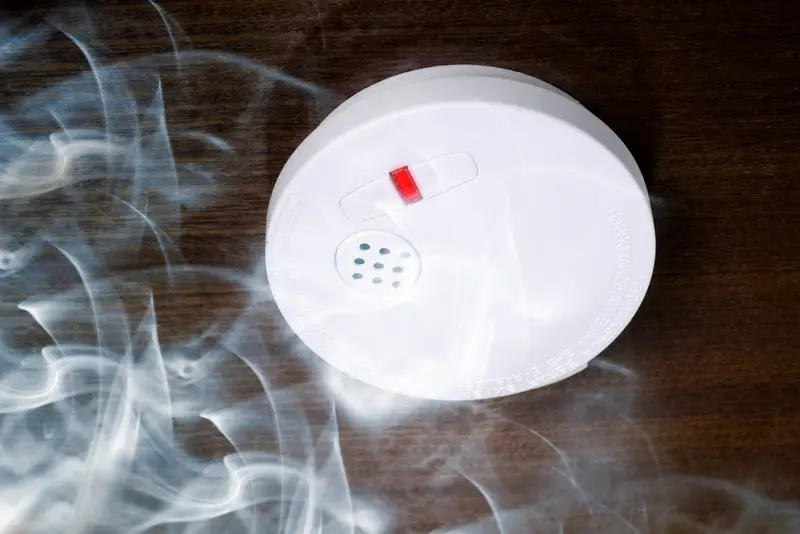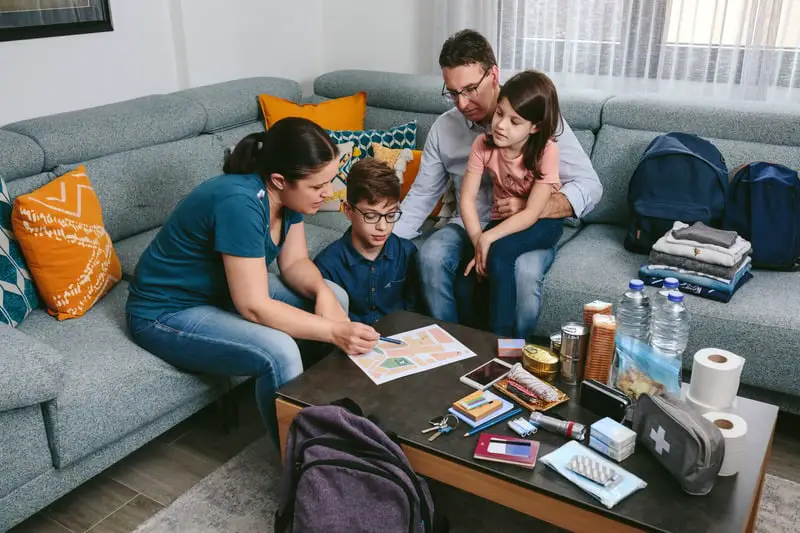In this article, I discuss fire safety - from how to use a fire extinguisher to planning a fire escape plan.
A house fire is one of the biggest threats to our home and our families.
Aside from having smoke detectors, are we really doing enough to ensure our loved ones are safe in the event of a fire?
Here I discuss what you can do to prevent a fire in your home and how you can make sure your family is prepared to respond in the event of a fire.
Surprisingly, fire departments across the United States are responding to house fire every 93 seconds (source: https://www.nfpa.org/).
Let’s make sure they are not going to have to respond to your home.
What most people don’t realize is that fire can spread as fast as you can run. In the right circumstances, a fire can sometimes outrun you.
We tend to get a lot of fire information from movies and TV. We watch an actor run into a building on fire, only to run out, saving someone in the process. That’s not reality.
Fire is hot, nasty, and deadly.
How to prevent a fire in your home?
The first thing you can do to prevent a fire in your home is to watch yourself in the kitchen.
The number one cause of home fires is unattended cooking. I don’t think that’s really a surprise to anybody.
We also need to make sure we have working smoke detectors in our homes. Smoke detectors will be our only warning that something is wrong when we’re asleep.

These devices can save your life, so make sure they are in working order.
You can commit to changing the batteries on your kids’ birthdays.
Make sure you have smoke detectors in your kitchen, hallways, in bedrooms, the basement, and the attic. Check out this article for more information on where to place smoke detectors.
Something important to note about smoke alarms is that not everyone in your home may be able to hear it and wake up.
As a new dad, I was shocked to learn that kids are not awakened by smoke alarms.
A study in the UK found that 80% of kids between the ages 2 and 13 do not respond to smoke alarm sounds when sleep.
You can’t count on an alarm to tell your kid what to do. Plan for an adult to retrieve any kids that might not hear an alarm.
As a side note, this also applies to security system sirens.
Next up, make sure you own at least two fire extinguishers and know how to use them.
Place one in the kitchen because we know that’s the place a fire is most likely to start, and put the other one near some bedrooms.
Most people, myself included, have never had the occasion to use a fire extinguisher.
P.A.S.S (Pull, Aim, Squeeze, Sweep)
Let’s now go over the accepted process of P.A.S.S to put out a fire with a fire extinguisher.
P stands for ‘pull’ the pin. Once the pin is pulled, point the nozzle toward the fire.
A stands for ‘aim’ low. You may be tempted to start at the top of the fire and work your way down, but nip the fire in the butt by aiming low.
S stands for ‘squeeze’ lever evenly and slowly. Don’t be in a hurry to empty that fire extinguisher.
S stands for ‘sweep’. Move the nozzle from side to side to maximize the spray and increase your chances of putting the fire out.
Here’s a video to see this in action.
Make sure you have a fire escape ladder if you live in a multi-storey home
I want to encourage you to get a fire escape ladder if you live in a multi-storey home.
Here’s the fire escape ladder that I recommend that you can purchase for under $50 from Amazon.
These ladders come in a box and can be stored just about anywhere.
When you open up a window to escape, these can be attached to the seal of the window, and the ladder unfolds and goes right to the ground.
From here, you and your family can climb down to safety if necessary.
I suggest that when you make a fire escape plan that you include a fire escape ladder in each rally point inside your home.
Remember the saying “two is one and one is none.”
Fire escape plan
We know that planning makes perfect, and that creating a fire escape plan might be the difference between life and death.
When you go to make your fire escape plan, map out every room in your house. Have a page for each floor in your home or apartment.
Make sure that everyone that you live with is a part of the planning process. Don’t do it with just one parent. Make sure everyone is there when the plan is discussed.

This will help kids feel more in charge of their safety when they are in on it.
Point out each way you can leave a room including doors and windows.
Designating an adult to wake up small children is necessary but also tell kids what to do if they are woken by a smoke alarm.
You need to be ready for both outcomes.
Make one person in charge of calling the fire department. If this can’t be done before escaping the home, go to a neighbor’s house and get them to call.
Create a rally point where everyone escapes. This needs to be a place away from your home, preferably on a neighbor’s property on the street that the fire truck will be responding.
Don’t only go through what to do in the event of a fire at night. Fire happens during the day as well.
Once everything is in place and everyone is on the same page then walk through your fire escape plan from start to finish.
What you can do to help your kids?
Teach them stop, drop and roll if they haven’t learnt it at school already. If they have, go over how it is done. Make them show you how it is done.
Make sure your kids know not to go looking for a dog or cat in the event of a fire. Reassure them that animals have great instincts and will know how to get out.
Tell them that if they touch a door knob and it is hot, not to open that door. A hot doorknob means there is a fire on the other side.
Make sure your kids know to crawl in the event of a fire. The air is safer down there.
If you live in an apartment, make sure you tell your kids to take the stairs. Never use an elevator in the event of a fire. You can get a slow roast inside of one or even have the door open to a wall of fire.
Be sure to tell your kids not to hide under the bed or in the closet. Fire fighters will be frantically searching for survivors and they need to be seen quickly.
Lastly, take your kids to meet a firefighter in full gear. That way they’ll know who to look for, for help.
Conclusion
There is no guarantee that a fire won’t happen in our homes, that’s why we need to be prepared.
While it may seem uncomfortable to talk with your family about fire, destruction and potential death, these conversations are what we need to have to increase our loved ones’ chances of surviving a fire.


